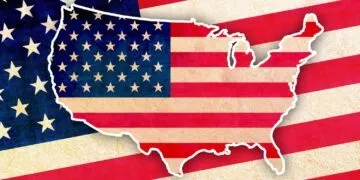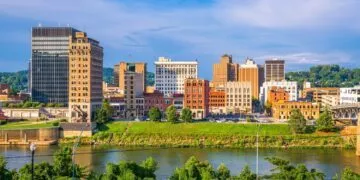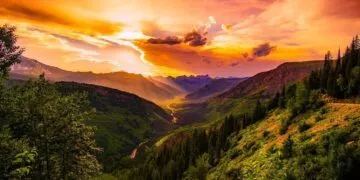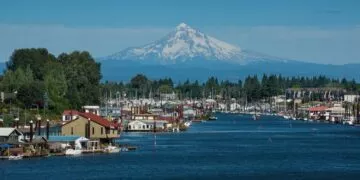Popularly nicknamed the “Evergreen State” but also known as the “State of Love and Trust,” Washington was the 42nd state to join the United States of America on November 11, 1889.
It has a population of 7,614,893 people (as of 2019), making it the 13th most populous state.
Washington is bordered by the states of Oregon and Idaho.
With a total of 71,362 square miles (184,827 square kilometers) of land and water, it is the 18th largest state.
The capital of Washington is Olympia, which is located in the west of the state.
That’s enough fast facts about the Evergreen State; here, you’ll learn some of the more unique and interesting facts!
People have been living in Washington for at least 13,000 years!
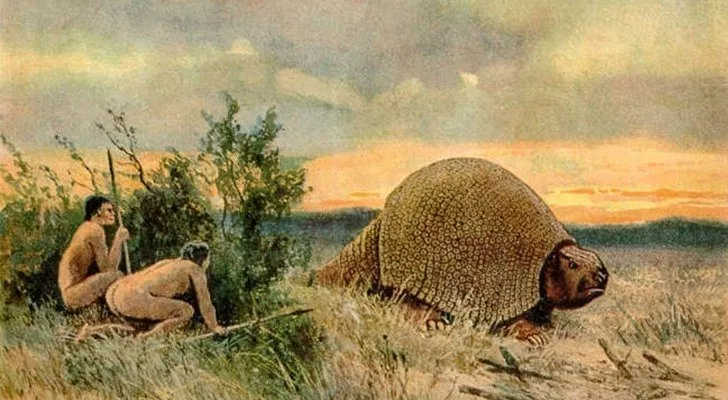
The most commonly held theories on how North America was populated claim that the first settlers made their way into the continent from the far east of modern-day Russia via the Bering Strait, which was a so-called land bridge due to lower sea levels.
It’s estimated that these early settlers arrived on the continent sometime around 15,000-13,000 BC.
Over the following few thousand years, they slowly spread out over North America, constantly searching for more favorable weather and hunting conditions.
Some of the earliest archaeological evidence of human occupation of modern-day Washington dates back to about 11,000 BC, but people may have lived there for even longer.
There were at least 125 unique tribes living in Washington before Europeans arrived.
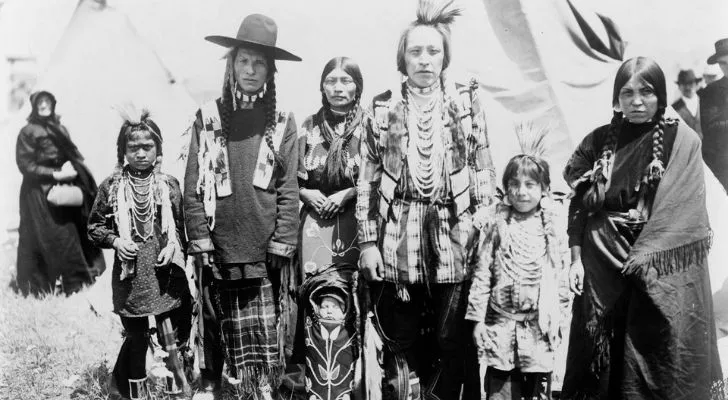
These tribes can be generally categorized according to the regions they lived in, as well as the lives they lead.
The Plateau Tribes, to the east of the state, lived simpler lives like their fathers and forefathers had done for thousands of years and essentially lived off what they could hunt or forage.
The coastal tribes lived off what they could catch from the sea and generally thrived off it. They built great longhouses and traveled the waters by large canoes they carved out of cedar.
The wealthiest group of tribes were the Columbia River tribes, who gained their great wealth from the territory they controlled, which included the best place for catching salmon in the entire region.
The first Europeans to set foot in Washington were Spanish.
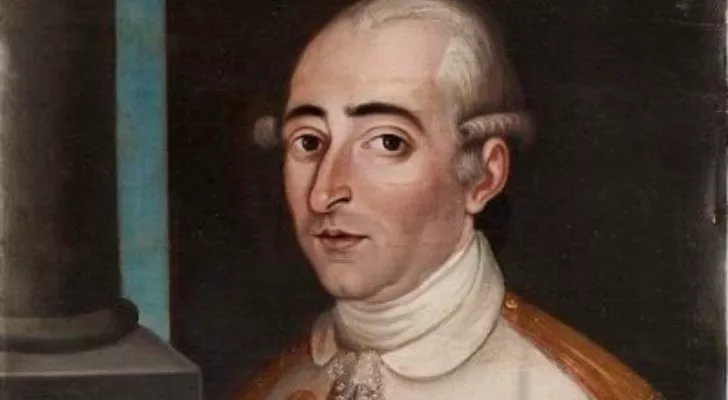
The northwest coast of North America was largely untouched by European explorers and settlers until much later than the east coast.
While some parts of the east coast were settled as early as the 16th century, the first ships to actually stop and make landfall within the region now known as the Washington State arrived in the late 18th century.
The first two ships arrived in 1774 and 1775 and were both captained by Spaniards.
The second of these ships, the Santiago, was led by the explorer Don Bruno de Heceta. Upon his arrival, Heceta claimed for Spain the entire coastal region as far north as Russia’s claims in modern-day Alaska.
Spain and Great Britain almost went to war over Washington.
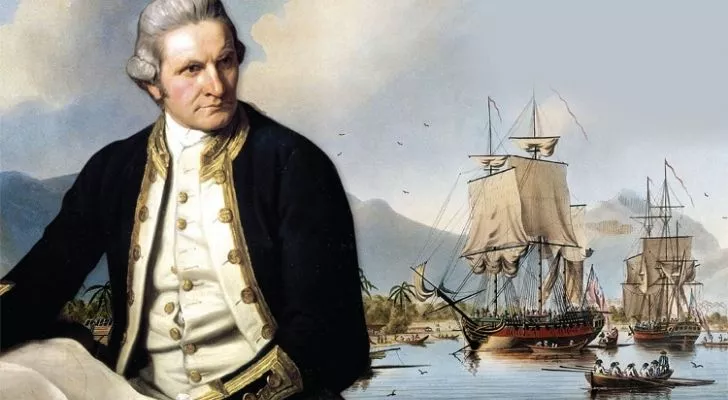
British ships captained by the famed explorer James Cook arrived in the Washington region in 1778, just three years after the Spanish, yet decided to try and claim the area for themselves anyway.
Neither parties realized that people had lived there for thousands of years and would prefer to keep it that way.
Ultimately, Spain and Great Britain almost went to war in 1789 because they couldn’t agree on who had a rightful claim to the region (fun fact – it was neither of them!).
It wasn’t until 1794 that they agreed that they both had a claim. However, the claim was intentionally vague because they kept arguing about it.
This, in turn, left the region open for other nations to explore their interests in the area.
The Lewis and Clarke Expedition reached Washington in November 1805.
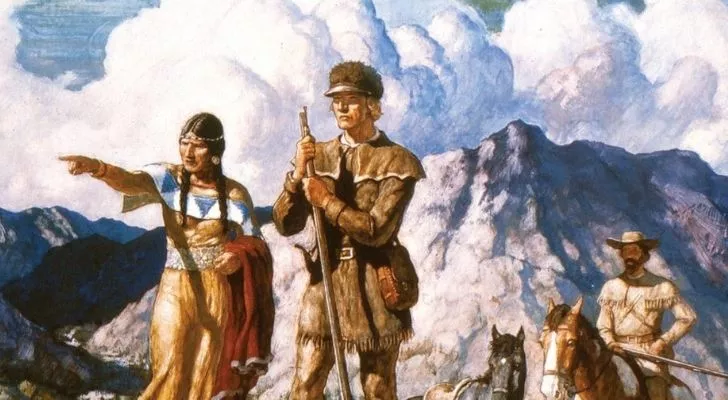
While Spain and Great Britain argued over who controlled the Pacific Northwest, the famed explorer’s Lewis and Clarke made a beeline towards the Pacific coast.
They mapped it as a part of the U.S. and claimed sovereignty over the tribes that lived there.
When they first reached the Pacific Ocean, they camped just north of the Columbia River, which now makes up the border between the states of Washington and Oregon.
They had to abandon their camp and move south into modern-day Oregon due to extremely unfavorable weather and ended up establishing Fort Clatsop in Oregon instead.
There they hung the U.S. flag as a statement that the region was theirs to control.
Washington was named after none other than President George Washington himself.
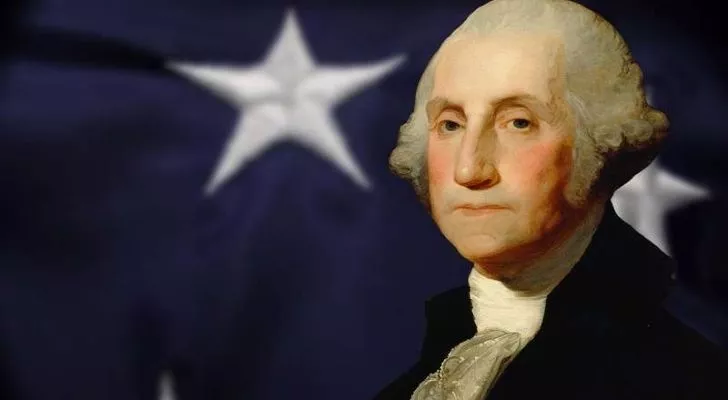
The region now known as Washington was first made a part of Oregon’s country.
As this grew, and differences arose between those north and south of the Columbia River, it was eventually split into Oregon Territory and Washington Territory in 1853.
The territory was actually meant to be called the Columbia Territory, but it was argued that there would be too much confusion with the U.S. capital district, the District of Columbia (D.C.).
It’s hard to see how this was less confusing, as nowadays, the state is often confused with Washington, D.C.
There were attempts to rename the region to various names, including Tacoma, when it aimed for statehood, but these ultimately failed.
Washington was the first U.S. state in the 20th century to give women the right to vote.
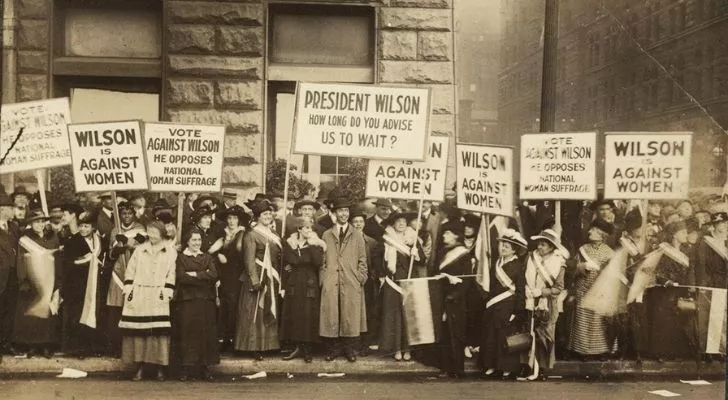
Washington had already given women the right to vote in 1883 when the region was still just a territory.
This right was taken away just four years later when it was found that many female voters were in favor of the prohibition movement.
Despite this, both women’s right to vote and the prohibition of alcohol were initially included in Washington’s proposed state constitution.
In the end, these two points were struck off, and Washington joined the U.S. as an exclusively male-voting, alcohol-swilling state in 1889.
This did not last long, with women’s suffrage being reintroduced in 1910 and prohibition in 1916 – the latter being introduced in Washington before any other U.S. state!
Washington experienced one of the most severe volcanic eruptions in North America.
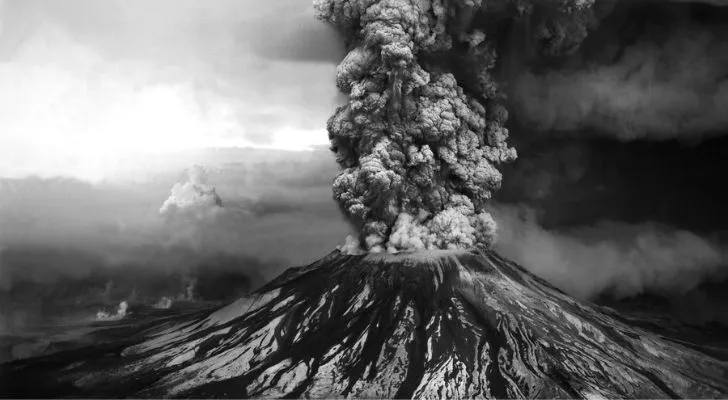
Mt. Saint Helens is one of the volcanic peaks of the Cascade Range, which runs from the North of Washington all the way down into California.
This volcano is just one of many along with this mountain range, but it’s undoubtedly the most explosive.
In March 1980, the mountain was struck by an earthquake, which started a chain of events that built up into what has been called the largest eruption in U.S. history.
The eruption was so huge that it spilled out clouds of smoke that turned day into night and flattened an area measuring some 230 square miles (600 square kilometers).
By the time Mt. Saint Helens had calmed down again, 57 people and more than seven thousand animals, such as elk and bears, had lost their lives.
The largest building in the world is in Washington.
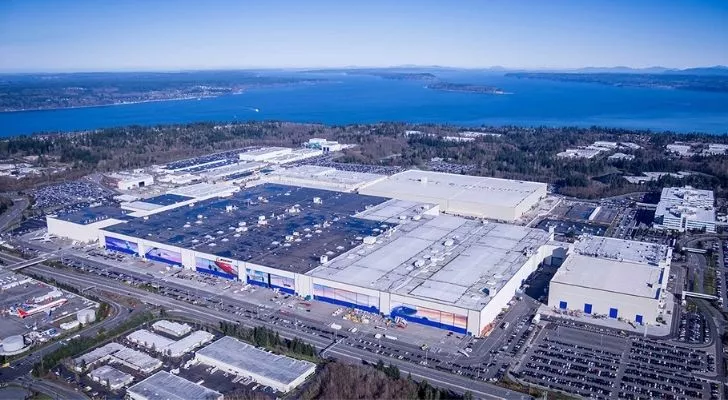
To be precise, it’s the largest building in the world according to its volume, which measures a mind-blowing 472,370,319 cubic feet (13,385,378 cubic meters).
It’s just one of the buildings which make up the Boeing airplane assembly factory in Everett, Washington.
The factory itself was constructed in 1967 with the primary focus on the assembly of Boeing 747s and has since expanded in size dramatically.
The world’s first Starbucks opened in Seattle, Washington, in 1971.
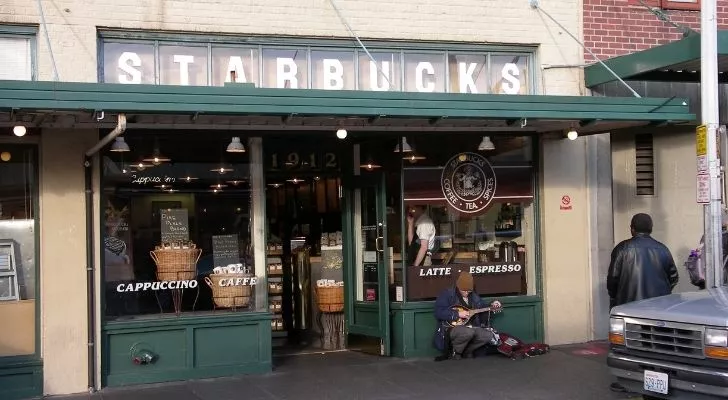
While it’s almost impossible to go anywhere in the world without bumping into a Starbucks (or a Starbucks rip-off), this hasn’t always been the case.
The Starbucks story began on March 30, 1971, with an unlikely business trio: a history teacher, an English teacher, and a writer, all of who enjoyed a good cup of coffee.
Interestingly, Starbucks originally didn’t brew coffee and was simply a store where one could purchase high-quality roasted coffee beans.
By 1986 Starbucks had already expanded to six locations within Seattle, yet only sold coffee beans and espresso.
It wasn’t until the founders of Starbucks sold the chain in 1987 that it began to take steps toward what we know today!
Father’s Day was founded in the small city of Spokane, Washington.

It all began when Sonora Dodd listened to a church sermon on Mother’s Day in 1909.
Part of her inspiration came from the fact that her father, a veteran of the American Civil War, had raised not just her but five other siblings all by himself.
Dodd felt that fathers deserved some praise, too, and proposed the idea to the Spokane YMCA.
It was first celebrated at the YMCA on June 19, 1910. Initially very much a religious day, the concept quickly turned commercial.
This commercialization prompted many to reject it, with it only becoming a federal holiday in 1972!
Two college students in Washington stumbled upon one of the oldest intact skeletons ever found in North America.
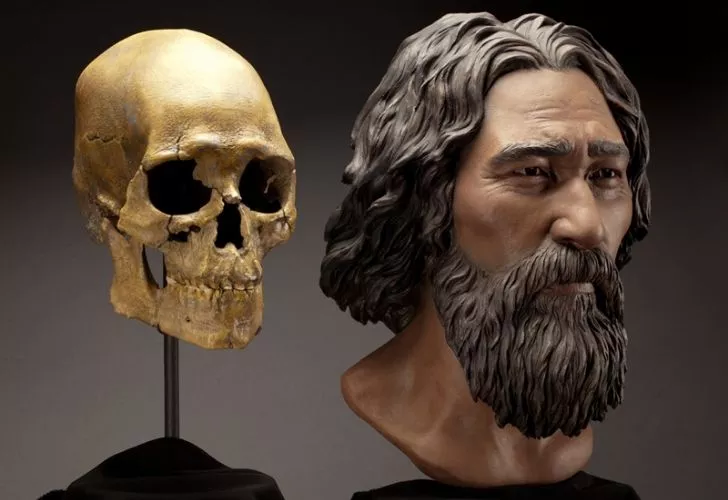
In 1996 the two college students went for a dip in the Columbia River when they stumbled upon a skull.
They immediately alerted the authorities, who alerted the coroner, who in turn alerted a local archaeologist.
Shortly after, an entire skeleton was pulled out of the silty riverbed, and everyone was immediately puzzled – it didn’t look anything like skeletons these days. It even had a broken stone spear point embedded in its hip!
The bones were then radiocarbon dated and were found to be at least 9,000 years old!
Known as the Kennewick Man, the skeleton turned out to be one of the most important skeletons ever to be unearthed in North America.
Jeff Bezos founded Amazon in a garage just outside of Seattle, Washington.
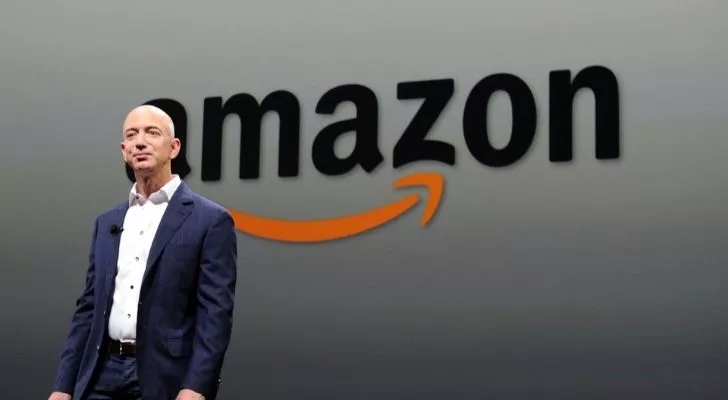
Don’t think Jeff Bezos started the business with pennies, though. In reality, he quit his position as vice president of a prominent Wall Street Firm to do what he could to capitalize on the Internet business boom.
Amazon, originally an online retailer of books, was at first called Cadabra incorporated.
It was soon renamed Amazon, as the original name had been confused with a cadaver, which was obviously not a good connection to be made!
Bezos was obviously onto a good thing, as within two months of starting a business in 1995, he was already making $20,000 in weekly sales.
More than half of Washington is still covered in forests.
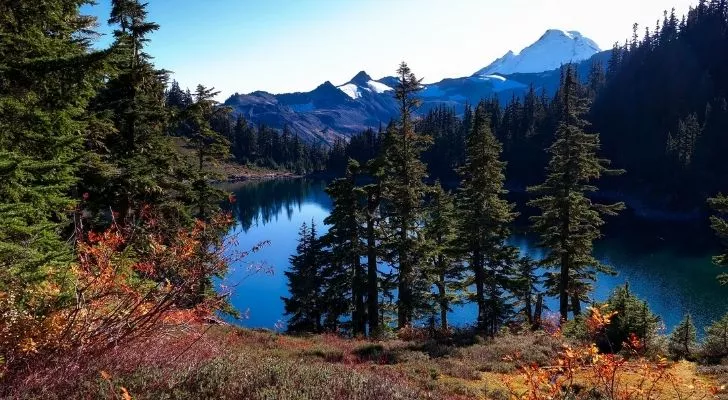
The vast majority of these forests lie on the westward side of the Cascade Range, while the eastern side of the state is quite dry and bare in comparison.
Most of Washington’s forests are federal land, while the rest are used commercially.
Fortunately, much of Washington’s forests are protected as National Forests, as they are home to a dazzlingly large variety of flora and fauna!
Washington is home to the oldest squirrel bridge in the U.S.
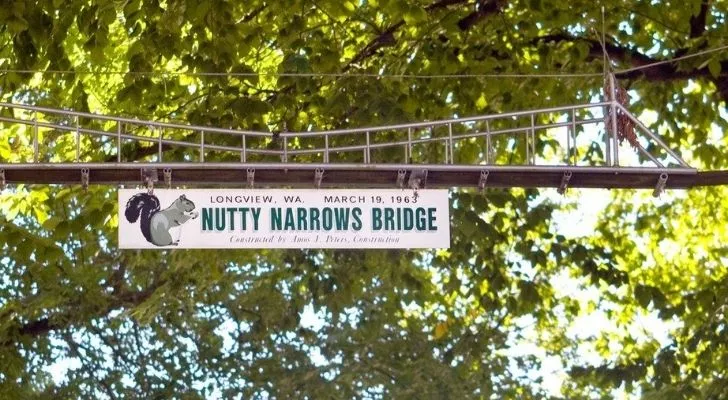
Yes, you read that right – a squirrel bridge! Known as Nutty Narrows, this bridge was built on March 19, 1963, to allow squirrels to cross between an office building and a nearby city park in Longview, Washington.
While it might seem silly at first, it was built by a couple of locals to prevent the squirrels from taking a dangerous route across a busy road.
Since then, four other bridges have been built for squirrels in Longview, all of which are popular tourist attractions!
The most north-western of the contiguous U.S. states, Washington has a surprising amount to offer.
While its history as a U.S. state is relatively short, that doesn’t mean that it hasn’t contributed much.
In reality, Washington has found the perfect balance between preserving its nature while making progressive strides and has, in the process, become one of the finest of the U.S. states.
If you’re thinking of taking a trip to check out the Evergreen State, just remember to pack an umbrella!


